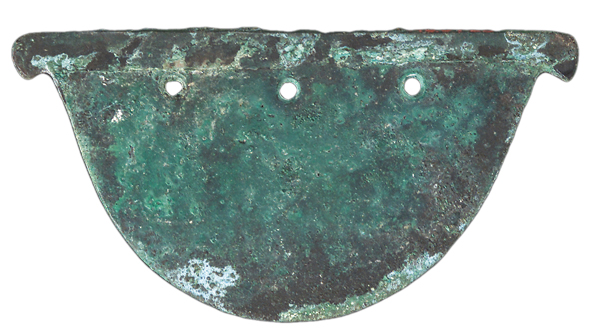
A. pizza cutter
B. plate necklace
C. ax blade
D. horse blinder
E. three-hole punch
Answer: (C) ax blade
This bronze ax blade was excavated in 1913 at Sheikh Farag, Egypt, by the joint Harvard University–Museum of Fine Arts Expedition and dates to Egypt’s Middle Kingdom (2055–1650 B.C.). When the finds were divided among the participating institutions and the government of Egypt at the close of the expedition, this was among the objects assigned to the Museum of Fine Arts in Boston.
Measuring 2.5 by 4.75 inches, the unadorned semicircular bronze blade had a sharp ground edge and three holes for securing to a long wooden handle. This is a type of Egyptian battle ax known as a “cutting ax.” The long handle allowed the bearer to keep a greater distance while cutting down enemies weakened by a preceding archery onslaught. The cutting ax is most effective against unarmored foes; Egyptian soldiers wore little or no armor during this period. The Hyksos are credited with introducing body armor into Egypt in the mid-second millennium B.C. (it had been in use in Asia as early as the third millennium), which led to a change in the form of battle axes away from the cutting ax to the piercing ax that could penetrate armor.
Already a library member? Log in here.
Institution user? Log in with your IP address.

